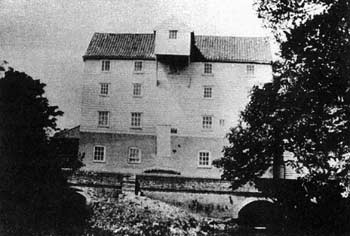 |
|
c.1900
|
|
Weybread Mill
River Waveney |
 |
|
c.1900
|
|
Weybread watermill was originally built of white weatherboard over a brick base with a pantiled roof. Despite its modest appearance it was actually one of the larger mills. Using a 7 foot fall of water, the highest on the Waveney, the mill ran with two waterwheels that before the the installation of the roller plant, drove up to 10 sets of stones, leaving the steam engine to power the cleaning and dressing machinery. In the 1700s one wheel also drove a straw and hay cutter. The larger wheel had a diameter of 20 feet and was 12 feet wide, while the smaller wheel had a diameter of 16 feet. Both wheels were made of cast iron with wooden floats. The mill had a 4½ sack roller plant fitted c.1900 by John E. Button. |
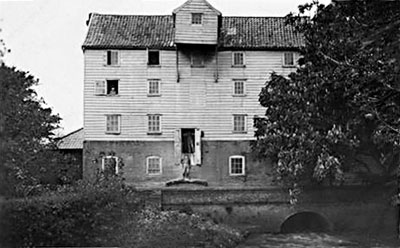 |
|
c.1910 |
To be LETT and Entered in upon at Michaelmas next. A WATER MILL at Weybread, near Harlefton now in the Occupation of Mr. John Mathews, with about 10 Acres of Meadow Land, or without. Enquire of Mr. Cotman. |
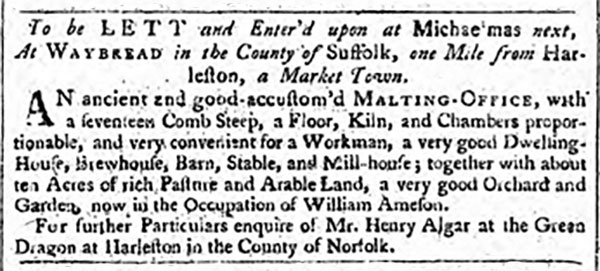 |
|
Ipswich Journal - 4th July 1763 |
The Copartnership lately fubfifting under the Firm of Meff. Jacob Stanton and Co. Flour-merchants, Millers and Farmers, of Weybread in the County of Suffolk, has been this Day dissolved by mutual Confent. Dated the 21d of March, 1794. |
J. Bond. |
| London Gazette - April 1794 |
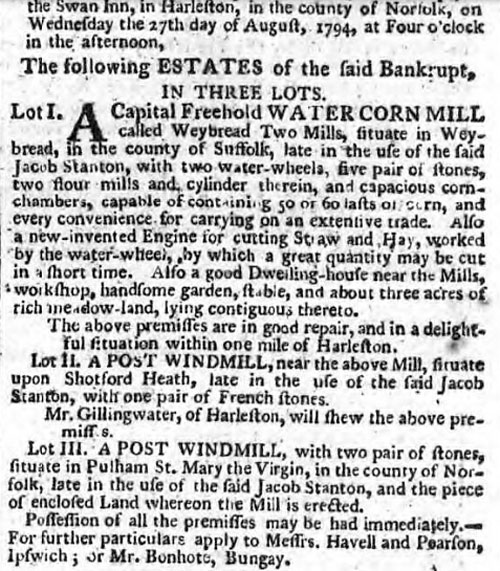 |
|
Norfolk Chronicle - 16th August 1794 |
Excerpt transcription from above advert |
| To be Sold by Auction By Samuel Safford By Order of the Assignees of Jacob Stanton, a Bankrupt At the Swan Inn in Harleston in the county of Norfolk, on Wednesday 27 August 1794 at 4 o'c in the afternoon The following ESTATES of the said Bankrupt. In Three Lots. Lot I. Water Corn Mill, Weybread ... Lot II. Post Windmill near the above mill upon Shotford Heath ... Lot III. A POST_WINDMILL with two pair of stones, situate in Pulham St. Mary the Virgin in the county of Norfolk, late in the use of the said Jacob Stanton and the piece of inclosed Land whereon the Mill is erected. Possession of all the premises may be had immediately. Apply to Messrs. HAVELL & PEARSON, Ipswich or Mr. Bonhote, Bungay. Norfolk Chronicle - 16th & 23rd August 1794 |
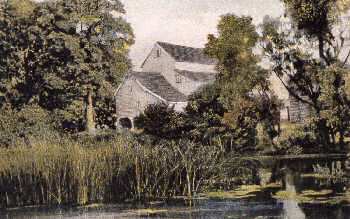 |
|
Hand coloured photo 1907 |
Mr. P. Nursey, at present engaged in the study of medicine at Edinburgh, has communicated to Dr. Duncan the following extract of a letter from a friend of his, a surgeon in the county of Suffolk, giving an account of an ingenious contrivance for fractures. |
 |
c.1912 |
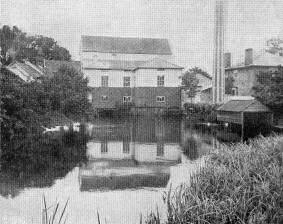 |
|
c.1912
|
Millers. WANTED Active Middle-aged PERSON as STONE MAN, who can be well recommended. Enquire of Mr. Bacon, Weybread Mills, near Harleston. |
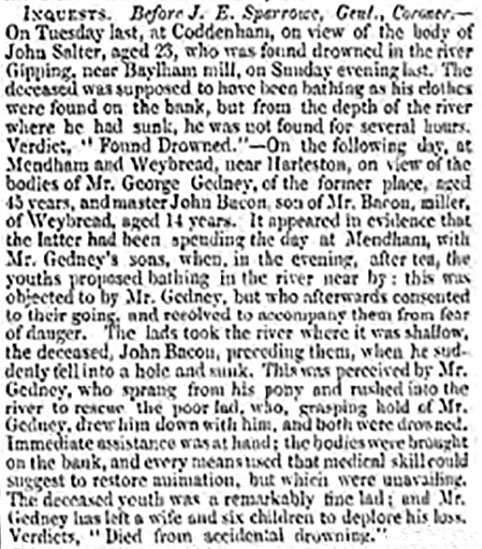 |
|
Ipswich Journal - 23rd July 1842 |
 |
c.1915 |
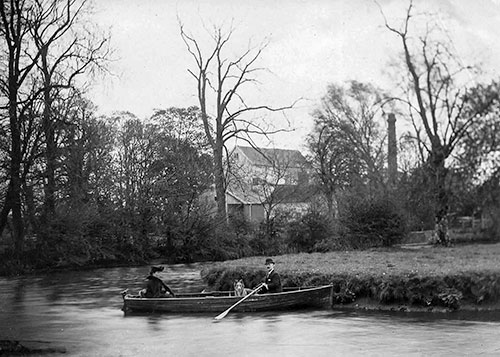 |
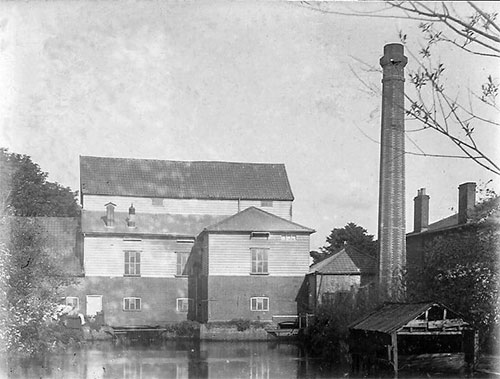 |
c.1918 |
Weed grids for both wheels visible - c.1919 |
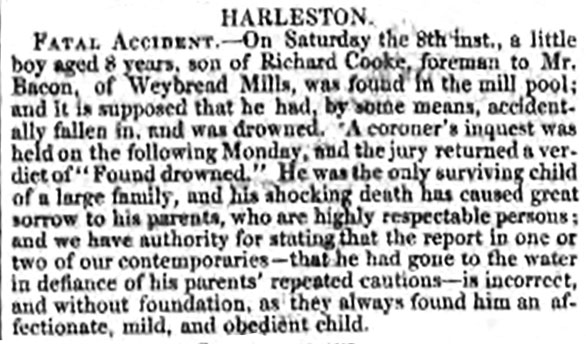 |
|
Ipswich Journal - 22nd June 1850 |
PULHAM MARKET |
On the following morning, about eleven o'clock, long before the excitement caused by the occurrence of the night had ceased, (house fire) intelligence was received that another fire had broken out in the village. The news proved only too true, and the fire engine was at once despatched on its second errand. The fire was on the premises of Mr. Aldridge, miller, Pulham Market, and was caused it appears by sparks given out by a passing locomotive belonging to Mr. George Chase, miller, Weybread. The sparks caught the thatch of the barn, and the result was the total destruction of the building together with about twenty coombs of corn. A number of pigs, which were in the building at the time, were so severely burnt that it was decided to kill them. Mr. Aldridge is not insured. Diss Express - 1st February 1878 |
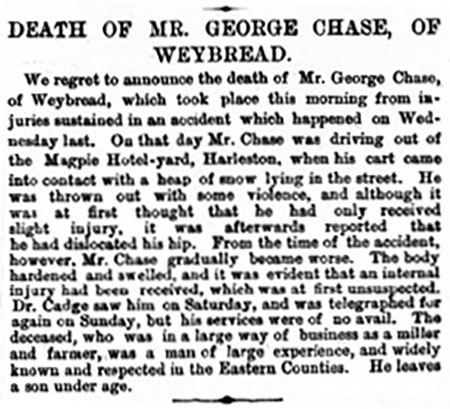 |
|
Evening Star - 3rd January 1887 |
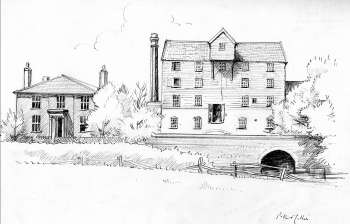 |
|
Pippa Miller's copy of an old photograph c.1919
|
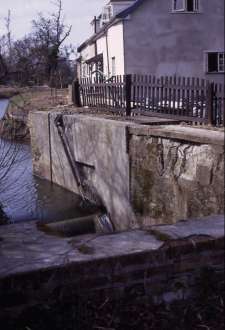 |
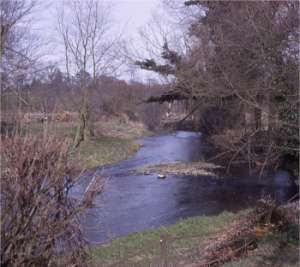 |
|
Wheel site March 1968
|
Lower
millpool March 1968 |
|
Jacob Stanton was made bankrupt in 1794, and the mill sold at auction as a result of this on 27th August that year. However when the mill was again offered for auction on 6th June 1799, interested parties were required to contact one Jacob Stanton on the premises. It is debatable as to whether he had reacquired the mill or whether he was merely an employee. |
|
Excerpt from sale details - 16th January 1841 |
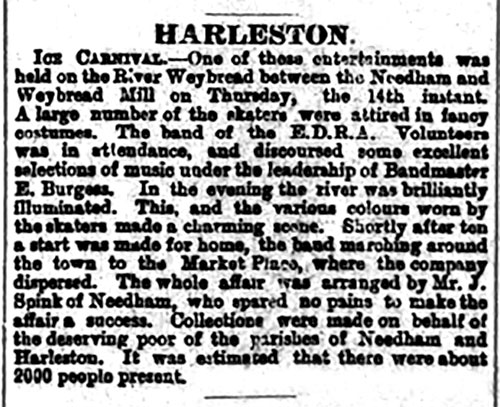 |
|
23rd February 1895 |
|
Details from
the sale particulars for the auction to take place on 5th June 1918 on
behalf of the executors of Henry Dane at the Magpie Hotel, Harleston,
conducted by George Durrant & Sons. |
Sale Particulars Schedule: |
|
1. |
Main Roller Shaft 44ft., Roller Shaft 15ft., 1 Barley Cylinder |
| 2. | Two double sets Brake Rolls 24 x 9, two double sets Reduction
Rolls 25 x 9, One double set Rolls 18 x 8, One No. 2 Victor Brush, One Oat
Crusher (Turner's No. 17), Two pairs 4 foot Wheat Stones, One pair 4 foot
Barley Stones, One Chaff Cutter (with necessary shafting) |
| 3. | Six Centrifugals, two sheets, Fan Exhaust, Eureka Wheat Cleaner with shaft and pulleys |
| 4. | One Double Purifier, One inter Elevator Reel 2½ sheets, One Single Purifier, One Flour Mixer, One Offal Mixer, One Vibrometer |
| 5. | Inter Elevator Reel 3½
sheets, Thirteen Sets Elevators and worm conveyors throughout the mill,
One Horizontal 25 Horse-power Engine, One Cornish Boiler 30 Horse-power,
Sack Hoist, pulleys |
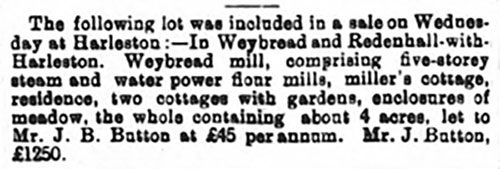 |
Diss Express - 7th June 1918 |
|
During the latter years of production the mill was used to produce poultry feed as well as flour and frequently ran 24 hours per day. In the 1980s a local described how the feed was taken down to the marshes by the tumbril load to feed geese and ducks. |
The mill's life came to an abrupt end when it was burnt down on the evening of Friday 6th February 1920. A disastrous fire occurred at Weybread on Friday evening, when the water and steam mills carried on by Mr. J. Button, of Diss, with the valuable contents in machinery, plant, and stocks of wheat and flour were destroyed. The country for miles around was illuminated by the huge tongues of flame, and hundreds of people from far and near gathered to watch the fire. |
|
A disastrous fire occurred at Weybread on Friday evening, when the
water and steam mills carried on by Mr. J. Button, of Diss, with the valuable
contents in machinery, plant, and stocks of wheat and flour were destroyed.
The country for miles around was illuminated by the huge tongues of flame,
and hundreds of people from far and near gathered to watch the fire. |
|
The fire that
finally destroyed the mill started at around 5.30 p.m. on Friday 6th February
1920 and by |
|
At the time
of the fire, the flour trade was bad and the mill contained a considerable
quantity of wheat along with some 300 - 400 10 stone bags of flour that
equated to around 18-25 tons and was stacked much higher than usual. |
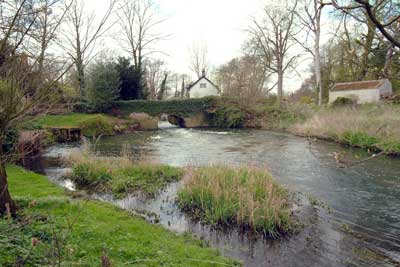 |
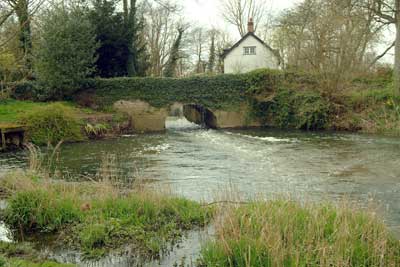 |
11th April 2004 |
|
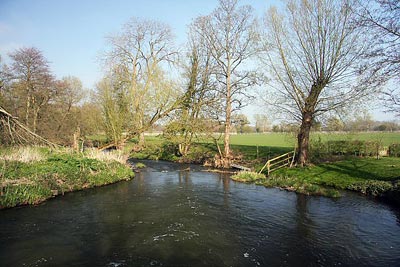 |
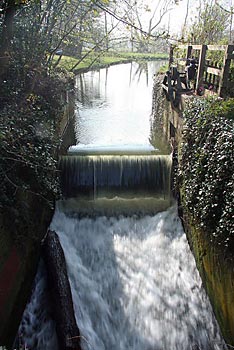 |
|
Mill pool 21st April 2008 |
Wheelrace 21st April 2008 |
|
My grandfather Robert William Clarke was born in Weybread (1880). His father Robert Clarke was a millwrigfht as was his father Samuel Clarke. They apparently serviced all the mills in the area. |
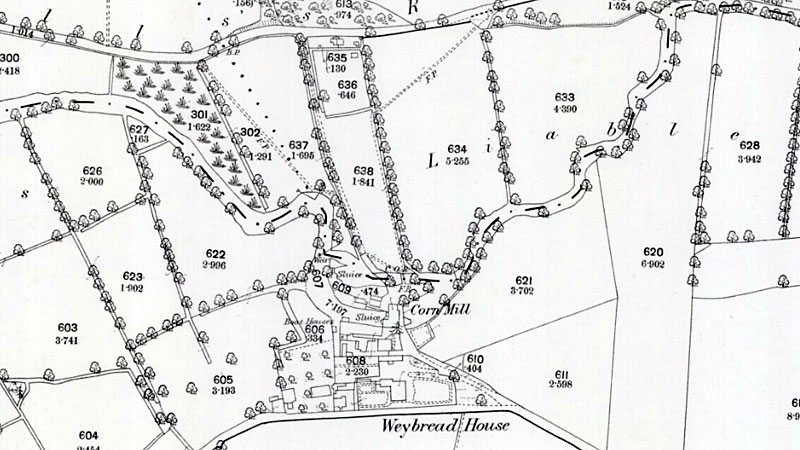 |
O. S. Map 1884 |
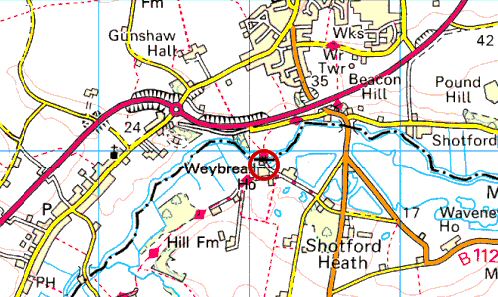 |
|
O.S. Map 2005 Image reproduced under licence from Ordnance Survey |
|
1703: William
Cook bought the Instead Manor that included the mill |
If you have any memories, anecdotes or photos please let us know and we may be able to use them to update the site. By all means telephone 07836 675369 or
|
| Nat Grid Ref TM 24128190 | Copyright © Jonathan Neville 2004 |